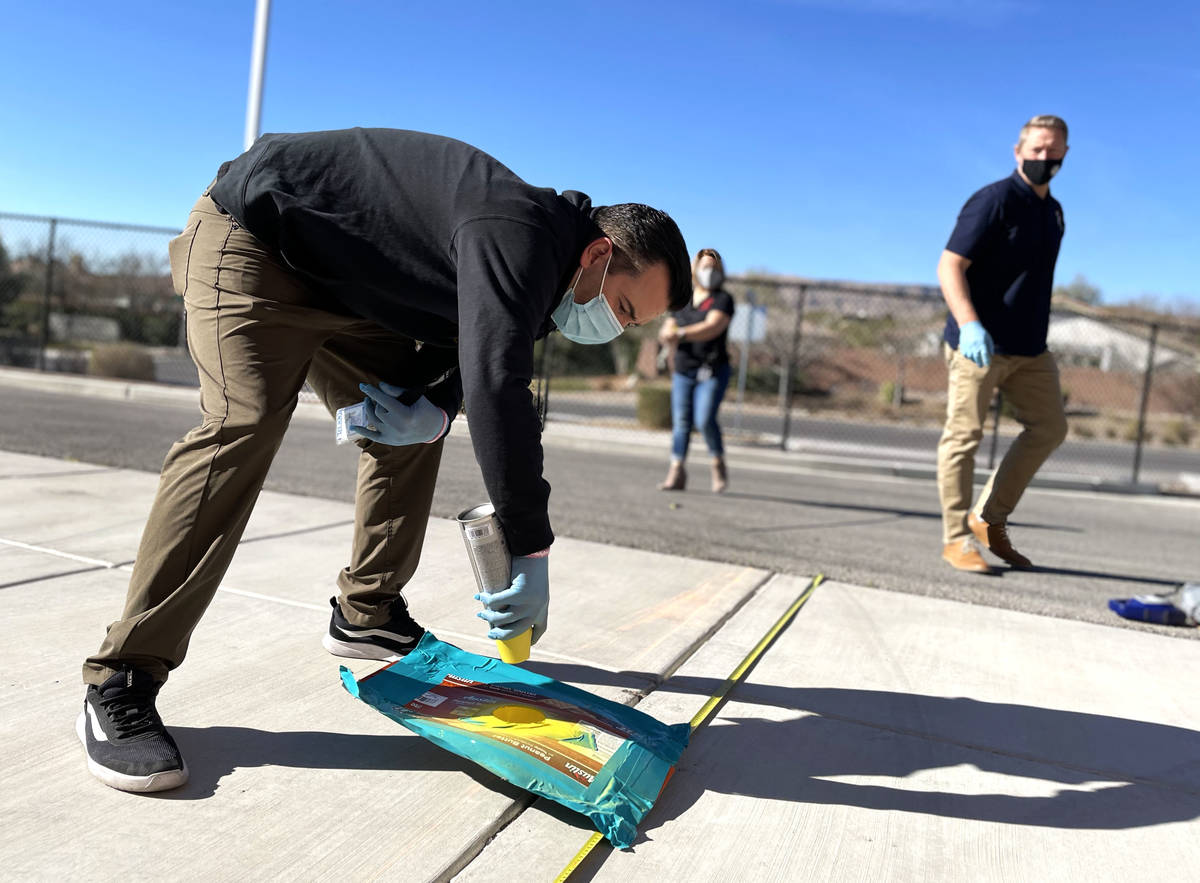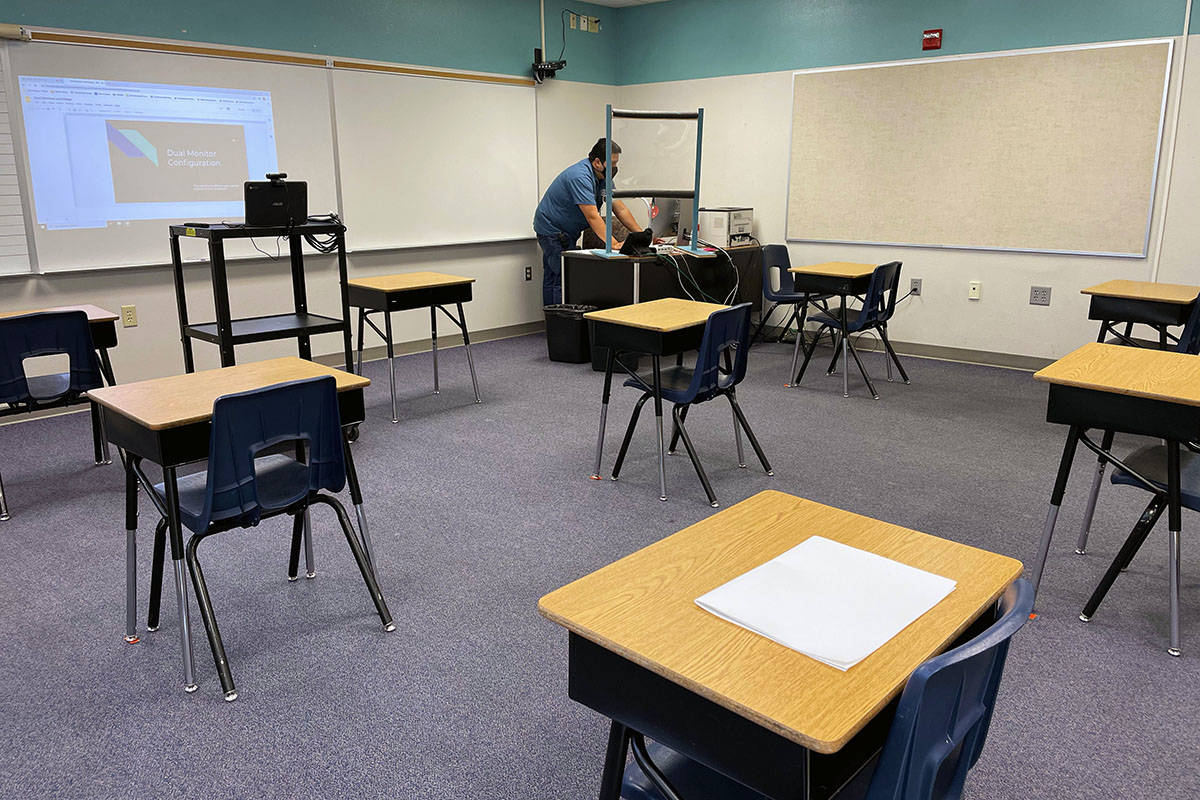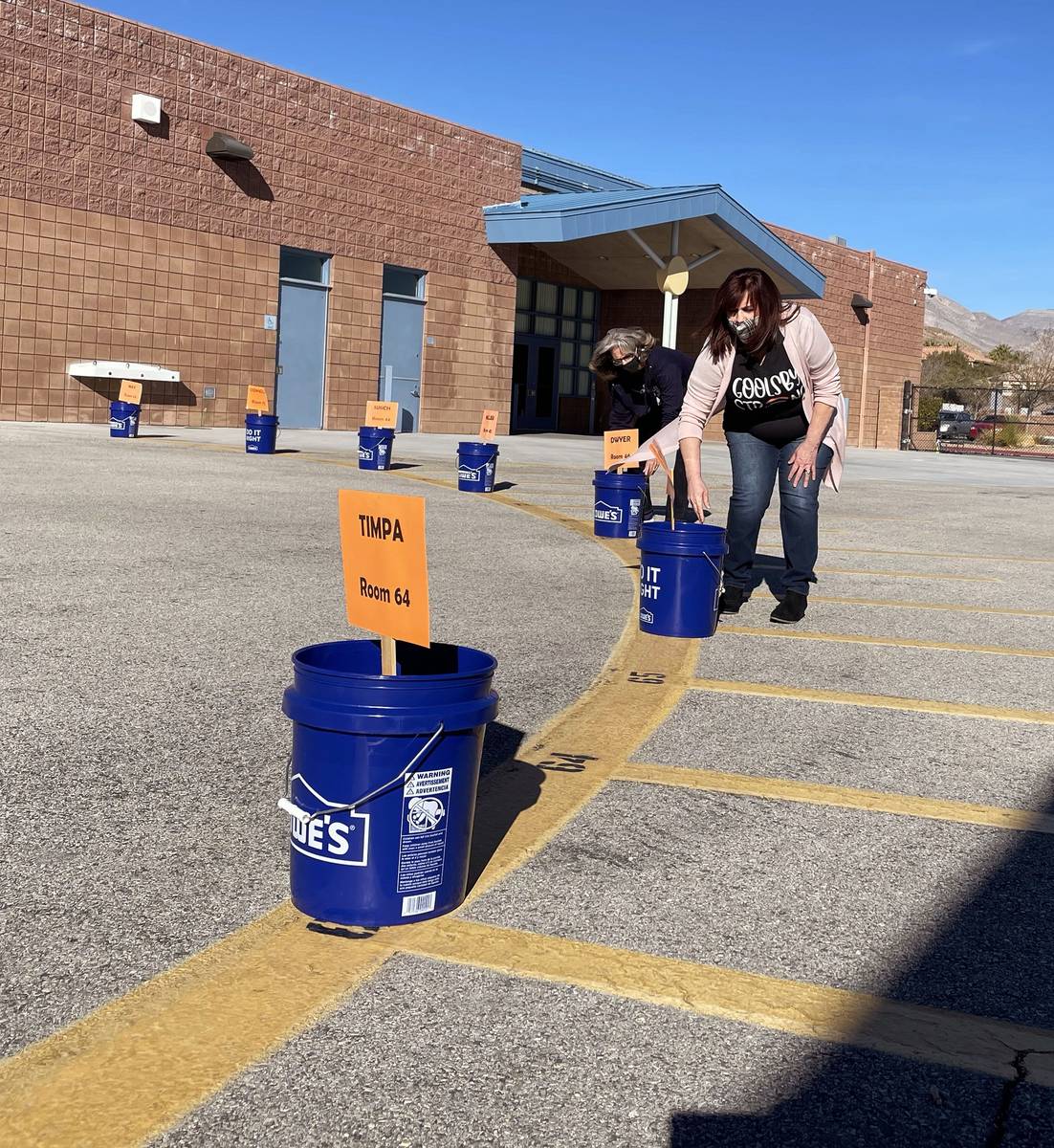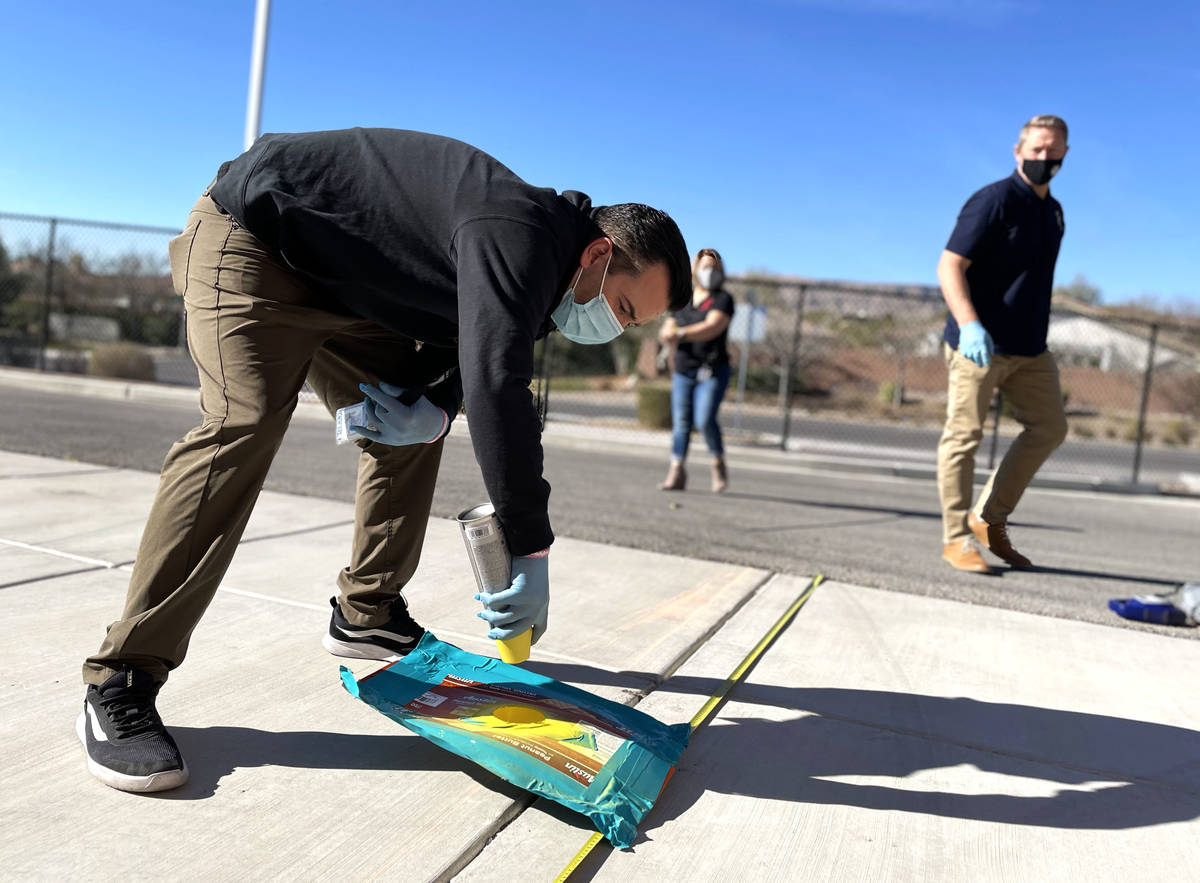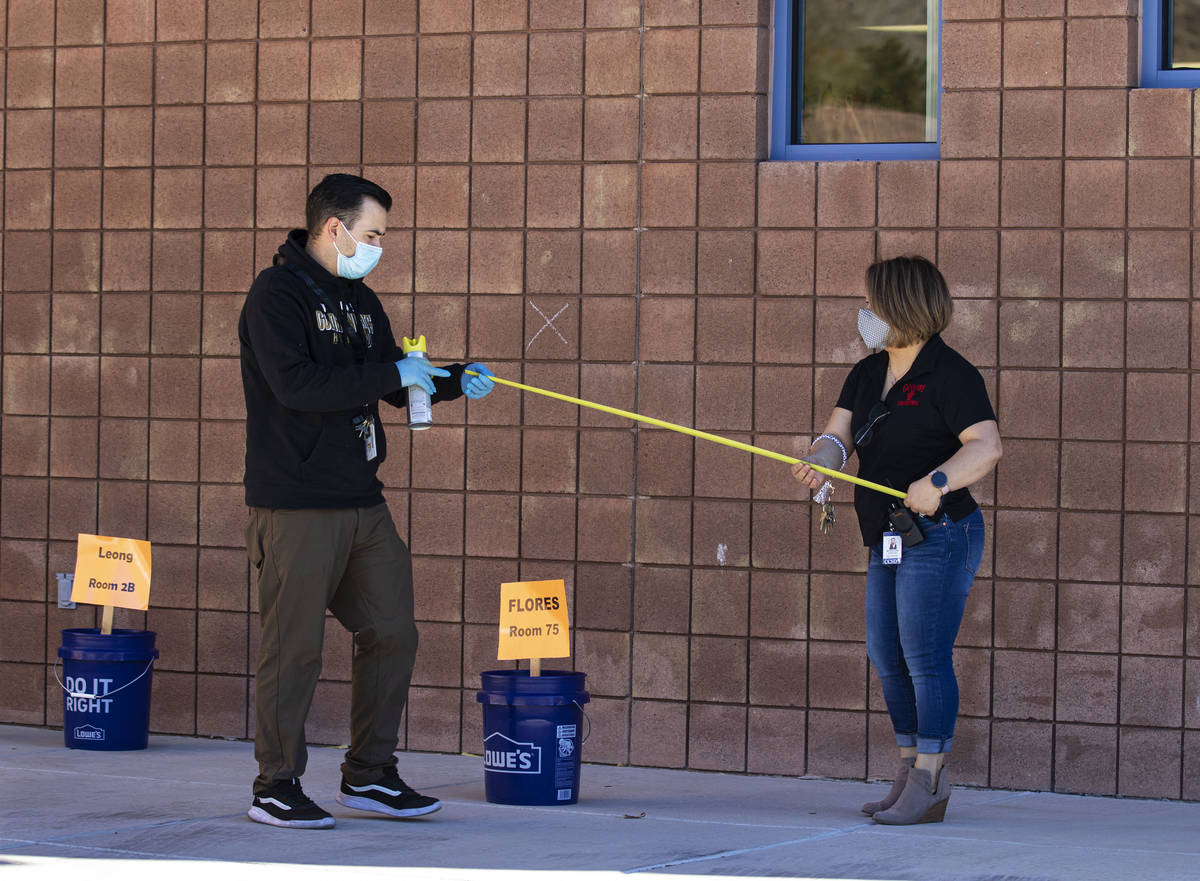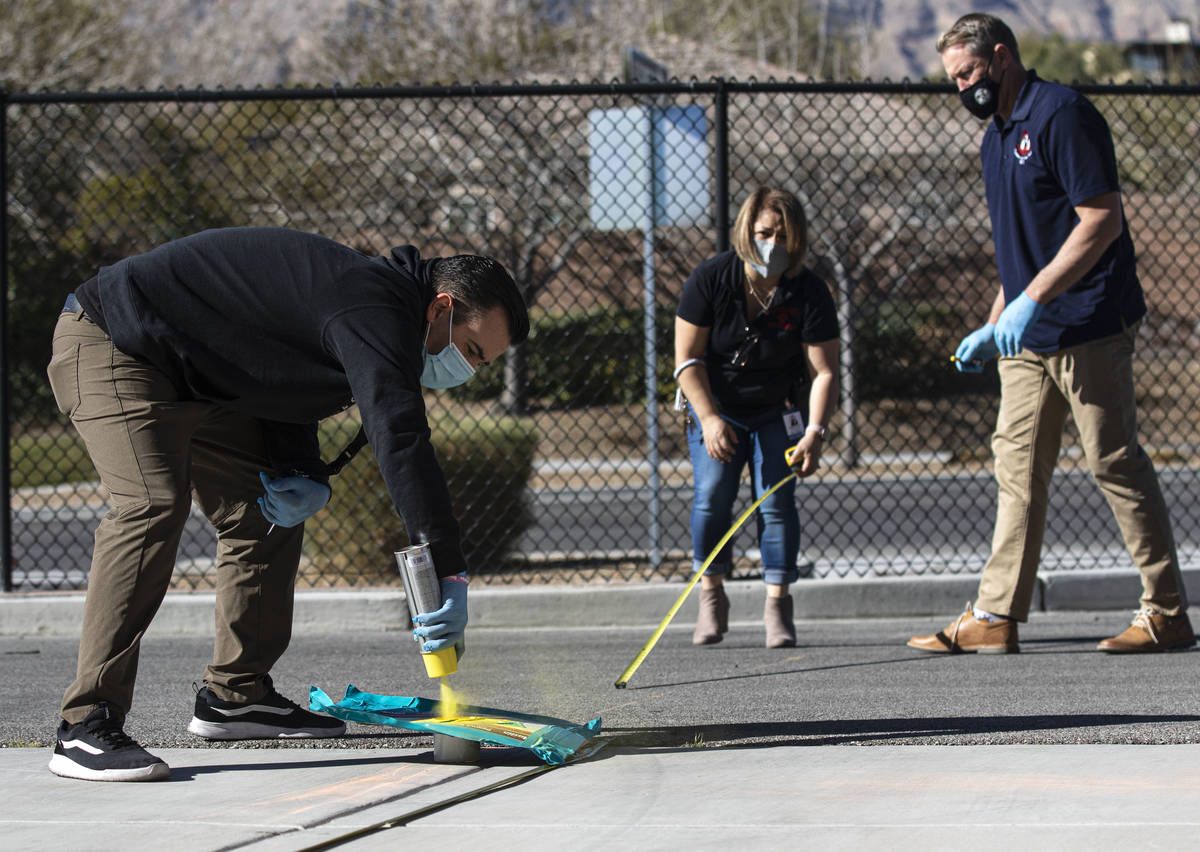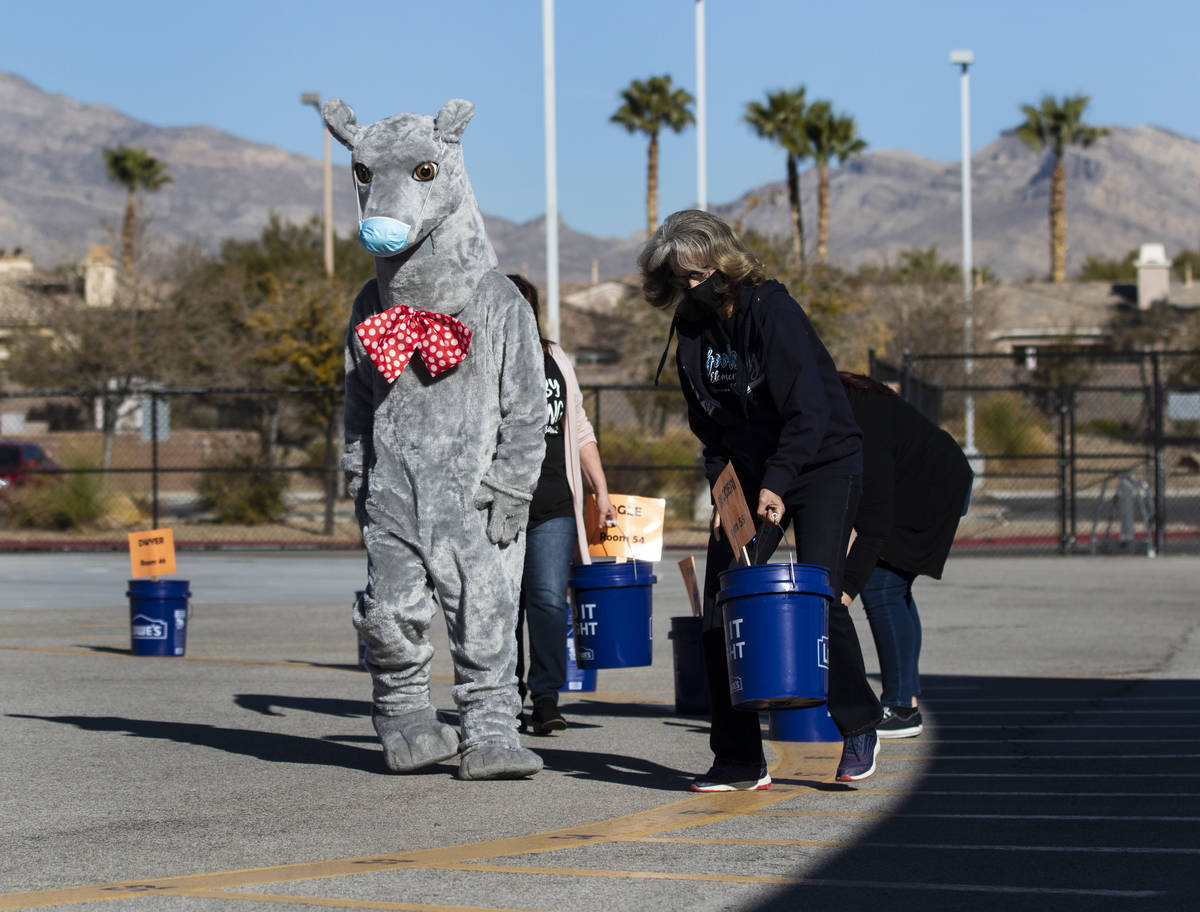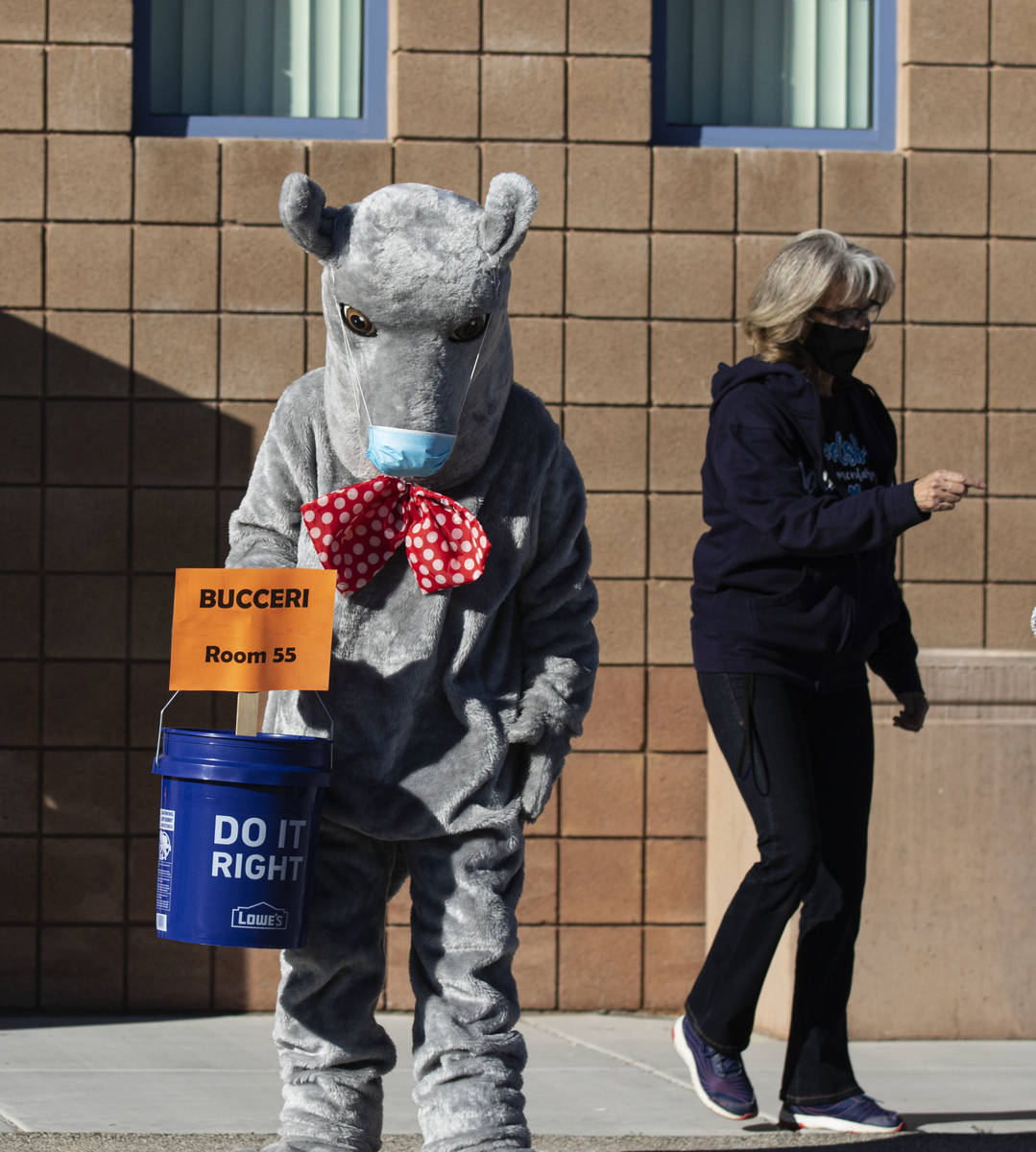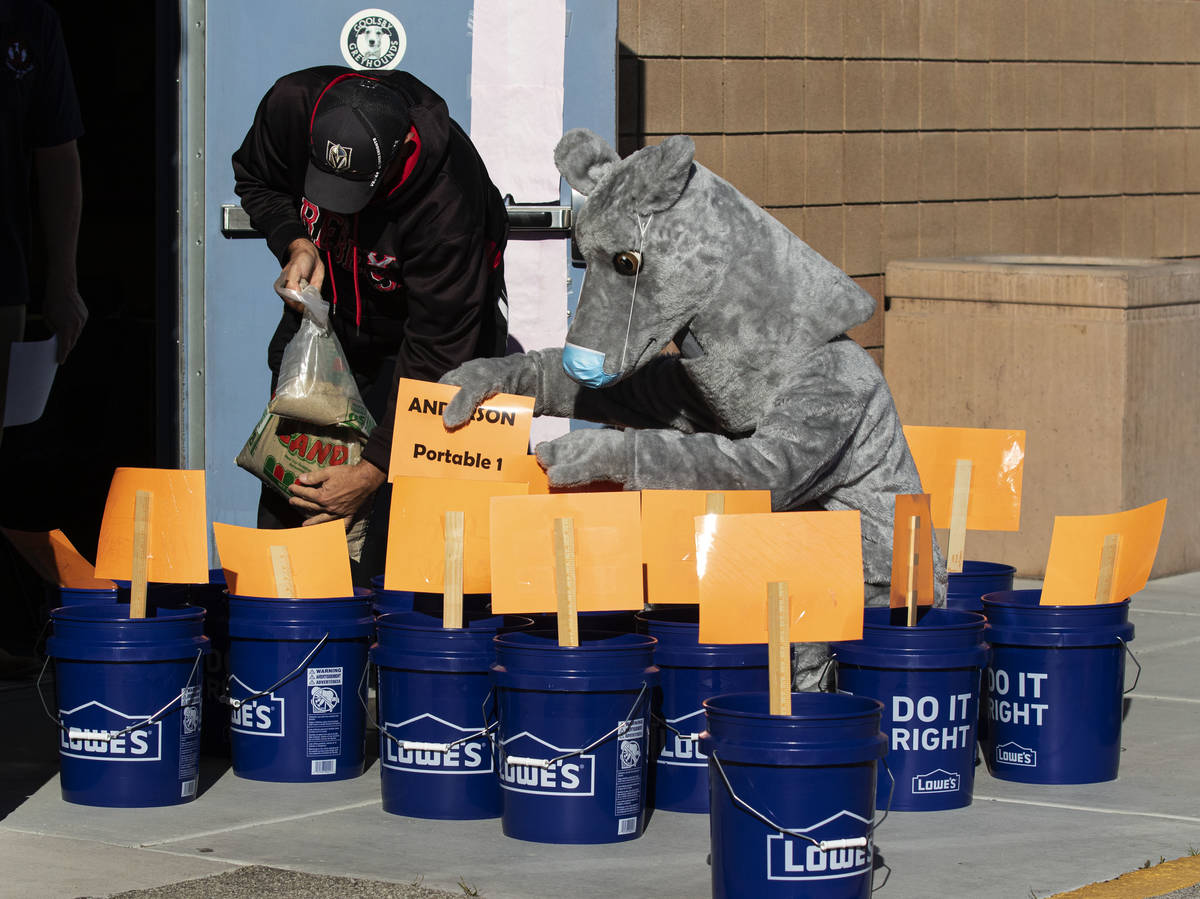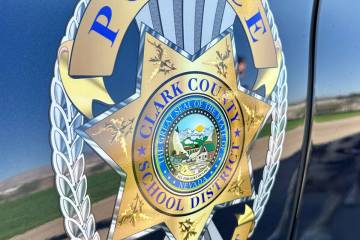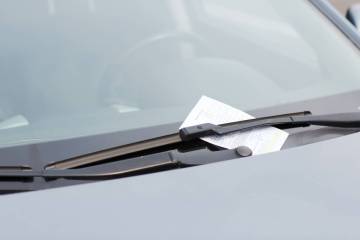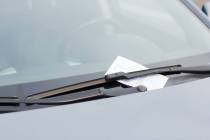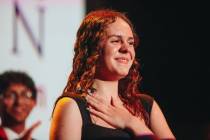CCSD teachers, staff return to classrooms for final rehearsal
Preparations at Goolsby Elementary School on Friday wouldn’t have looked out of place at a training exercise for a Roman legion — or a practice for a marching band.
Staff marked the lines where columns of students at the Summerlin school will wait 6 feet apart before they file into classes starting next month. A maximum of a dozen desks were similarly distanced in classrooms, facing a two-camera teaching set-up that will allow students at home to follow along with the lessons.
There was plenty of hand sanitizer on hand, as well as enough extra masks to cover a crisis situation in which every kid in the school loses theirs at the same time, Principal Danny Eichelberger said.
Had the staff prepared for everything? Wielding a can of yellow spray paint as she completed a row of social distancing markers, Assistant Principal Magdalena Casillas said, “That’s what we hope.”
A monumental task
Since the district announced in January that school buildings would reopen on a hybrid basis to the youngest students beginning March 1, schools have been working out the day-to-day logistics of a return amid what is still a major pandemic. Staffing, scheduling, drop-off, pickup, cleaning and meal service are among the issues they’ve needed to work through.
Necessary teachers and staff have been given a mandate to report to campuses on Monday to prepare their classrooms for the new instructional model — a rotating cohort system in which some students will take in-person classes on Mondays and Tuesdays, others on Thursdays and Fridays while still another group continues with full-time distance learning.
With 225 elementary schools making these determinations for themselves, there’s plenty of variation in the specifics of each plan. But a big factor is the number of students returning to the classroom, which determines everything from instructional schedules to where students can eat lunch.
Administrators and staff at schools visited by the Review-Journal shared that they felt equal parts anxiety and excitement at the prospect of bringing students back for the first time in nearly a year and testing the plans they’ve been working on for almost as long.
With 338 students returning to in-person instruction at Goolsby out of 491 eligible — including 80 percent of all second graders — administrators have a comparatively large population of students to accommodate.
Principal Eichelberger attributed the high return rate to Goolsby being a close-knit school community, where word spread among families planning to return, encouraging more to do so.
The school has also had something of a practice run, with small groups of students in each grade attending school for social and emotional support. But the physical space needed for small groups versus the cohorts changed the equation completely, Eichelberger said.
In planning for this week’s broader return of young students, the school had to figure out a space that would work for lunch, no matter the weather, at the same time office clerks were poring over the roster to make sure siblings were enrolled in the same cohort.
One saving grace was the willingness of 95 percent of Goolsby teachers to not only return to the classroom but take on teaching both in-person and virtually, which will allow most students to stay with the teachers they’ve gotten to know, Assistant Principal Casillas said.
“That was a big point for our teachers. They wanted to keep their same students, keep their same families, provide them with that consistency in the middle of all this change,” she said.
But while the spirit may have been willing, the teaching of both in-person and online classes may well have proved impossible were it not for the dual camera setups now in place in each classroom, Eichelberger said.
One camera will face teachers at their desk, while another is positioned in front of the whiteboard. Teachers will have the freedom to move around the classroom between cameras, so a student at home is able to see both angles, said technician Matthew Young, who set up Goolsby’s system.
“Without that, I’m not sure we could have done it,” Eichelberger said.
Staff and student numbers
The district has not provided a number of students districtwide doing in-person learning versus virtual learning, nor a number of staff members who indicated in a survey they would prefer to return, despite repeated requests from the Review-Journal.
Data from a reopening survey released Friday found that families broadly preferred hybrid learning over distance learning in all geographic areas, though Summerlin and Henderson families had the most dramatic spread, choosing hybrid learning over distance learning by 62 to 38 percent.
Students identified in the survey as Asian, Pacific Islander or “limited English proficient,” preferred distance learning, though in slim margins in the case of the latter two groups. All other ethnic groups and students receiving special education services expressed a preference for hybrid learning.
Schools are expecting widely varying return rates — from 73 percent, or 359 students, at Staton Elementary School in Summerlin to 19 percent, or 87 students, at Kim Elementary in the southwest valley.
A smaller return population brings certain advantages, including allowing students to leave their classrooms and eat in the cafeteria.
Some schools have also leveraged smaller in-person cohorts to assign teachers to cohorts as well, allowing them to teach from the classroom two days a week and from home the other three.
But if more students opt to return in the coming months, those plans may have to change, noted Principal Robert Hinchliffe of Tyrone Thompson Elementary, which is assigning teachers to a single in-person cohort.
With 124 kids interested in returning, Hinchliffe told his school organizational team last week that the school’s priority was also to keep students with their established teacher, especially after cuts earlier in the year already reshuffled classes once.
He found that when he approached a handful of families about switching teachers, almost all preferred to stay with their child’s current teacher, even if it meant changing cohorts.
Hinchliffe said he expects to be ready on March 1, noting that the waiting period before students return will be the hardest.
“It seems to me we should get the kids there and figure out what we don’t know and what we’ve missed,” he said.
Ruby Thomas Elementary has come up with another creative staffing plan: pairing up teachers working from home with those working from the classroom.
The intent is to allow students who have had to change teachers because one party or the other chose in-person learning to spend at least part of their hybrid week with the teacher they’ve known for the last six months of school.
“We’re trying to minimize the effects of taking kids away from the teachers they know,” Principal Dennis Kubala told his school organizational team.
Other considerations
Schools have also devoted time to mapping out that bane of elementary school parents, the pickup line, to allow for social distancing and an organized dismissal.
At Hancock Elementary, parents will be given cards with their child’s name, which they will hold up like airport greeters so a gate monitor can call for the student. Having 74 kids in one cohort and 77 in the other will help with the parking situation, Principal Sarah Payne told her school organizational team.
At Dearing Elementary, parents will be assigned a gate and be reminded regularly to use it, Principal Christine Beaird told her school organizational team last week.
With around 200 students returning to Dearing, the school plans to try to fill open spots in the hybrid model with more students, particularly those with poor attendance records.
Beaird said students would eat lunch in the multipurpose room, with one class eating outside one day a week on a rotating basis. After the meal, they will file outside for a few minutes of movement activities before returning to the classroom.
The school will also provide teachers with a creative way to instantly demonstrate 6 feet of space: a PVC pipe, cut to size.
Beaird told the school organizational team she was certain they would find they had missed something despite all their preparations.
In response to parent skepticism about the hybrid model, she acknowledged its shortcomings, particularly for very young students who will face a hard adjustment attending school for two days and then returning home for three.
“I think we’re going into knowing we’re going to hit some bumps,” she said. “Two days a week is not enough. We already know that. But I’ll take two over zero.”
Contact Aleksandra Appleton at 702-383-0218 or aappleton@reviewjournal.com. Follow @aleksappleton on Twitter.



